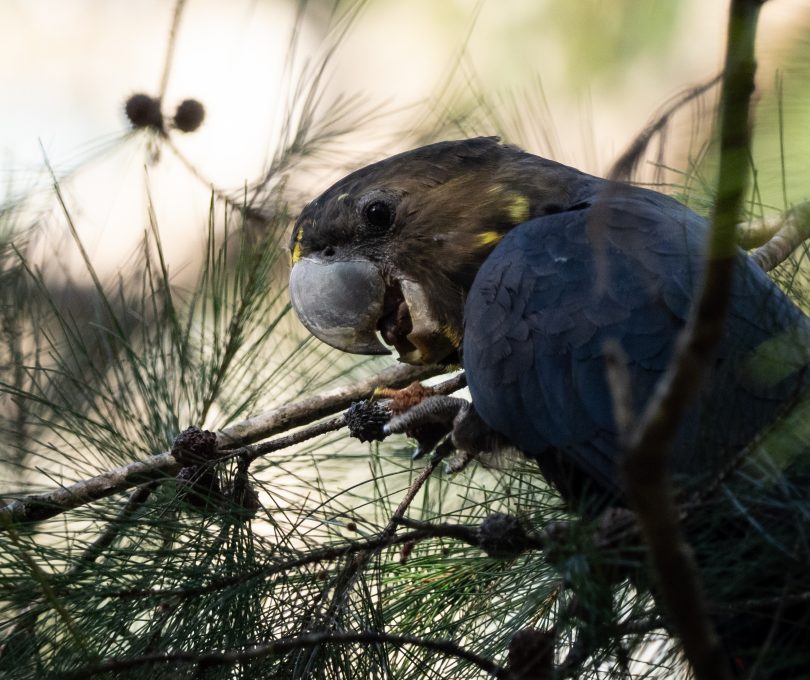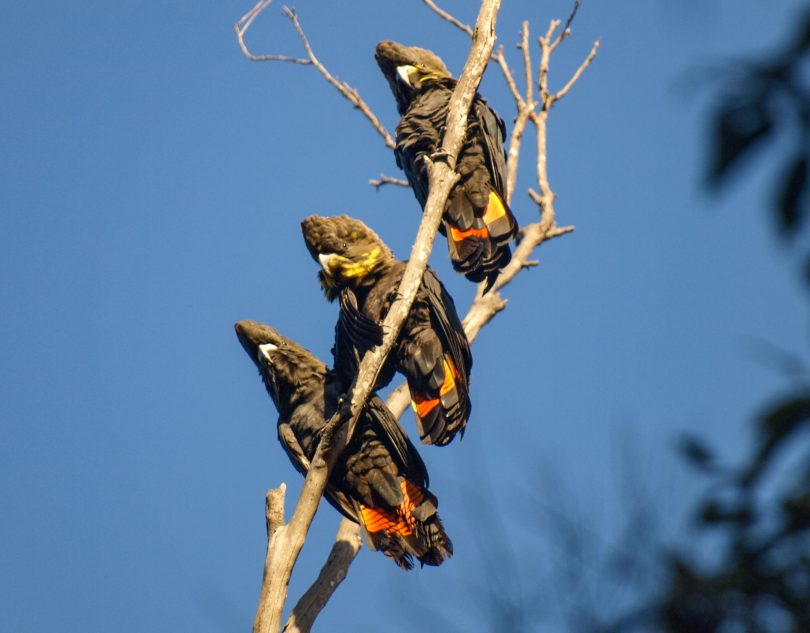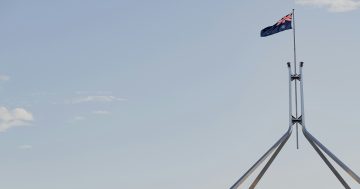
Canberrans are being asked to help plot the locations of the threatened glossy black cockatoo. Photo: Kerri-Lee Harris.
Canberra birdwatchers, walkers and community members are being asked to be on the lookout for the threatened glossy black cockatoo during its current breeding season.
The ACT Government is asking for help in mapping the location of these small birds and the task shouldn’t be too difficult given they are such noisy, messy eaters!
ACT Environment Minister Mick Gentleman said the glossy black cockatoos (Calyptorhynchus lathami) are one of the more threatened species of cockatoo in Australia and are listed as vulnerable in NSW and the ACT.
“In conjunction with a NSW Government Saving Our Species program, we would like a better understanding of just how many of these cockatoos are left in our region and where are their important habitats,” Mr Gentleman said.
“Glossy black cockatoos are considerably smaller than the yellow-tailed black cockatoo, which is the only other black cockatoo in our area.
“They also have red or orange-red tail feathers and short tails. Females have a variable amount of yellow on their necks and head.
“The birds feed almost exclusively on allocasuarina fruit (often called ‘she-oak cones’). In the wider Canberra region, its occurrence is closely tied to the presence of drooping she-oak.”
Mr Gentleman said that one or two of the birds or even small groups will sit quietly, chewing on the fruit – sometimes remaining in the same tree for hours.
“In fact, the squeaking and cracking of their feeding is often the first indication of their presence,” Mr Gentleman said.
“Such feasting also leaves tell-tale evidence long after they’ve gone in the form of the scattering of torn allocasuarina fruit on the ground below.”

You can often tell the glossy black cockatoos are around by the squeaking and cracking noise made while they are eating. Photo: Kerri-Lee Harris.
To date, the hotspots for observing glossy black cockatoos in the local region include Mt Ainslie, Mt Majura, Rob Roy Range Nature Reserve and the Burra area.
However, in recent years they have been seen in other areas such as Goorooyarroo, Gossan Hill, Pinnacle and Molonglo Gorge nature reserves.
People seeing the glossy black cockatoo anywhere in the ACT or south-east NSW are asked to report their sighting via the community wildlife platforms, Canberra Nature Map (ACT and surrounding NSW local government areas), Atlas of Life in the Coastal Wilderness (far NSW south coast) or Budawang Coast (Shoalhaven area).
In reporting the sighting, try to include the location, the number of birds (including sex and age if known) and their behaviour at the time. Also try to photograph the birds, as even an image from a distance may be sufficient to confirm the identification.
“We would also appreciate sightings of the glossy black cockatoos feasting aftermath to be posted on these community platforms,” Mr Gentleman said.
For further information please go to the Canberra Nature Map or Atlas of Life websites.












